June 27, 2023
Since the release of NCHRP Research Report 1043: Guide for Roundabouts in June 2023, we’ve been getting a variety of questions about how this guide differs from its predecessors (NCHRP Report 672: Roundabouts: An Informational Guide, Second Edition, and the original FHWA Roundabouts: An Informational Guide). While NCHRP Research Report 1043 continues the context-sensitive, performance-based design approach from these prior guides, it also includes a significant amount of new research and reorganization. This article summarizes the major changes you’ll see as you start to use the new Guide.
Reorganization of the New Roundabout Guide
NCHRP Research Report 1043 reorganized the Guide into five parts and fifteen chapters that follow the project development process. One key addition throughout is the discussion of retrofitting existing circular intersections.
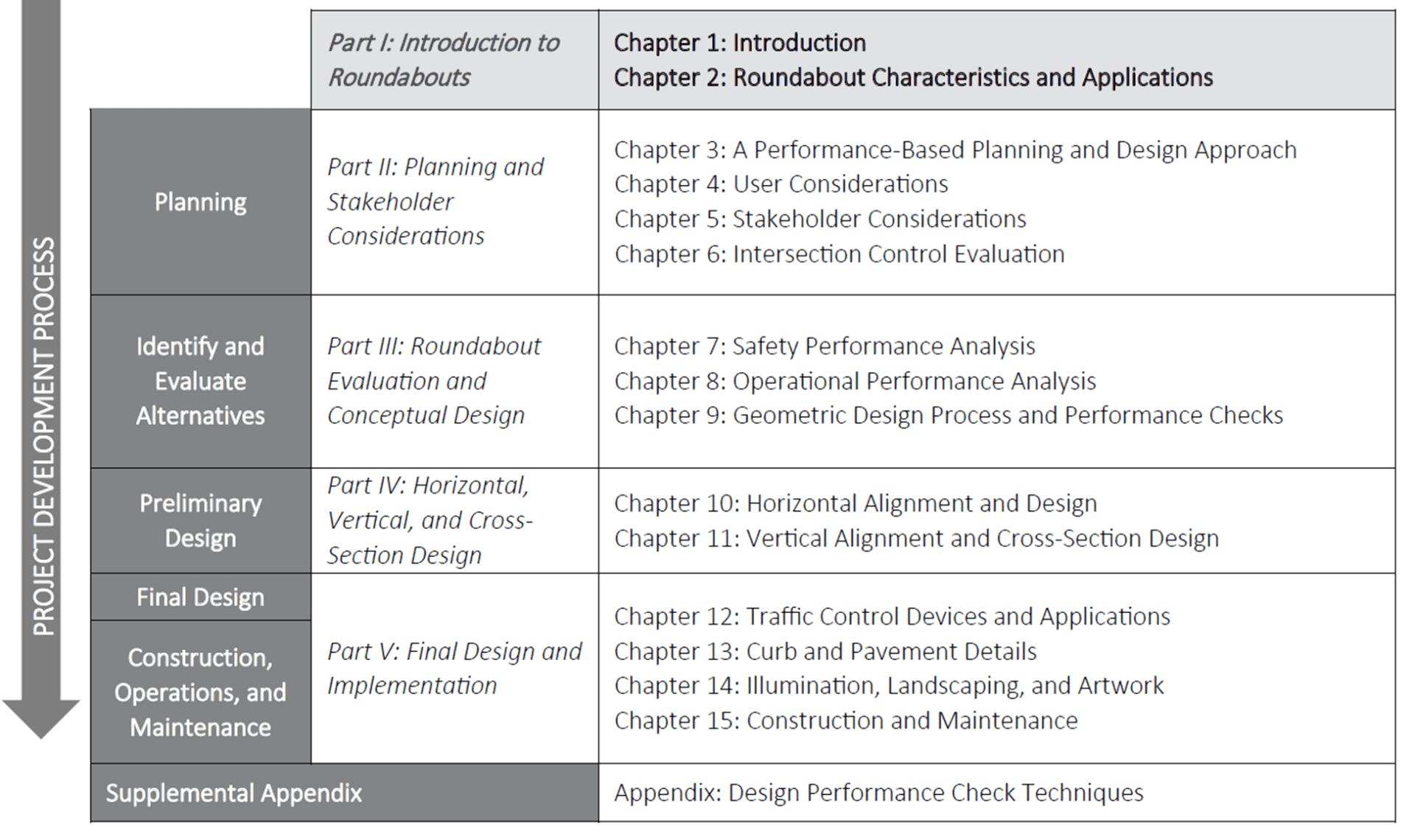
While not intended to be comprehensive, the following list summarizes many of the key updates/additions, separated by part.
Part I: Introduction
- Updated history of roundabouts.
- Added Vision Zero, Safe Systems Approach, and other policies.
Part II: Planning and Stakeholder Considerations
- Added performance-based design approach as the organizing framework.
- Updated user characteristics and considerations.
- Updated stakeholder engagement techniques.
- Added Intersection Control Evaluation.
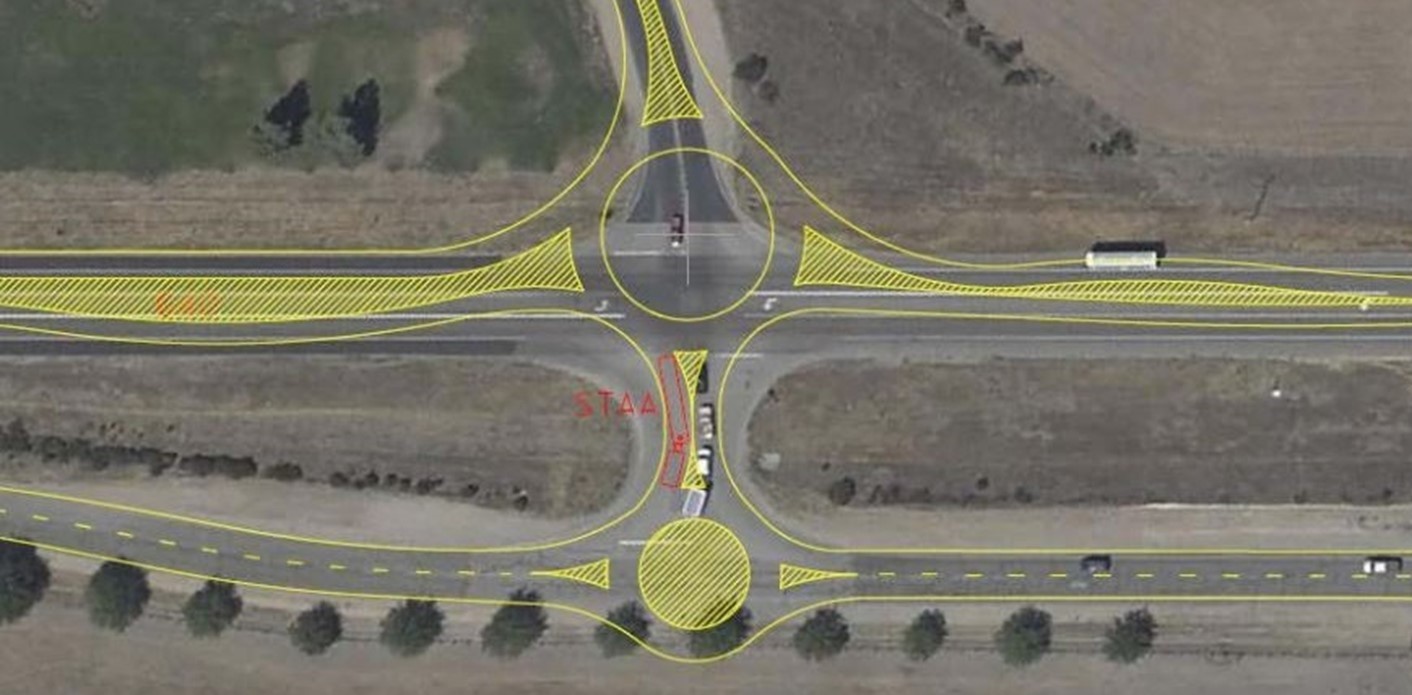
Exhibit 6-3 from the Guide: ICE Example-Conceptual Sketch for Alternative 2a, Roundabout at Intersections 1 and 2. Source: Kittelson & Associates, Inc.
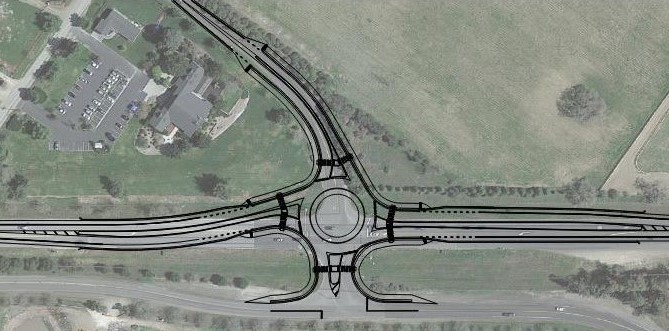
Exhibit 6-5 from the Guide: ICE Example-Intersection Alternative Recommended for Final Design. Source: Kittelson & Associates, Inc.
Part III: Roundabout Evaluation and Conceptual Design
- Revised conflict point presentation to better explain differences among multilane design approaches.
- Updated safety analysis to reflect Highway Safety Manual 1st Edition, NCHRP Research Report 888: Development of Roundabout Crash Prediction Models and Methods, and other research.
- Updated operational analysis to reflect the Highway Capacity Manual 7th Edition.
- Clarified the use of design vehicle (designing for a particular truck type) versus check vehicle (accommodating a particular truck type).
- Updated stopping sight distance to clarify the need for sight lines to where pedestrians are waiting, not just where they are crossing.
- Updated intersection sight distance to draw distinction between two conditions: the upstream position while in motion, and the position at the entrance line while stopped.
- Added bicycle and pedestrian design flags method adapted from NCHRP Research Report 948: Guide for Pedestrian and Bicyclist Safety at Alternative and Other Intersections and Interchanges.
- Added pedestrian wayfinding and crossing assessment method for people who are blind or have low vision adapted from NCHRP Research Report 834: Guidelines for the Application of Crossing Solutions at Roundabouts and Channelized Turn Lanes for Pedestrians with Vision Disabilities.
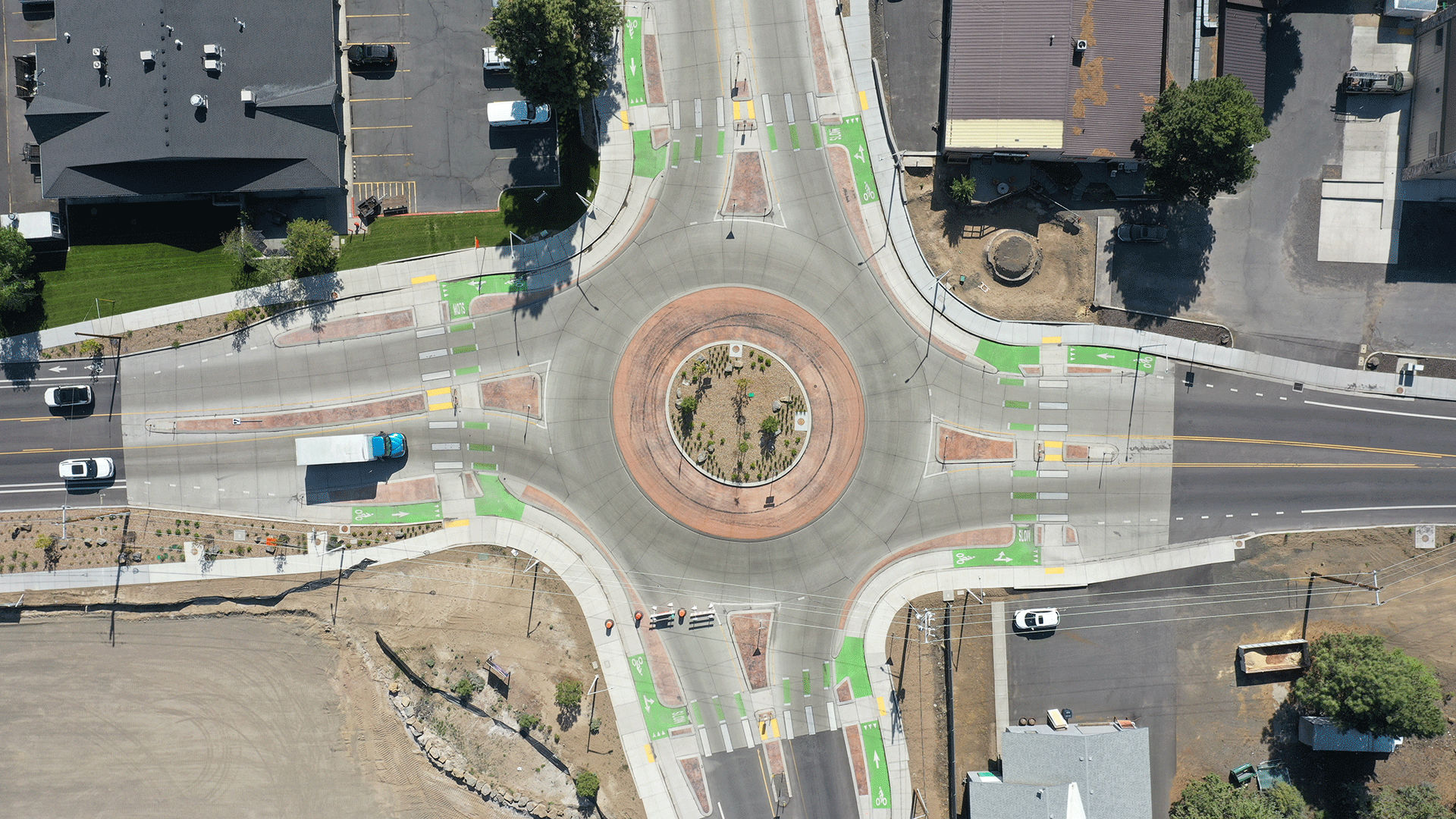
A roundabout with separated bicycle and pedestrian facilities in Bend, Oregon. One of the many new design elements in the Guide is a method to screen roundabout designs for bicycle and pedestrian safety.
Part IV: Horizontal, Vertical, and Cross-Section Design
- Added introductory sections on design process, principles, and performance influences.
- Added new material on tactile walking surface indicators for pedestrians who are blind or have low vision.
- Added many new exhibits on pedestrian and bicycle treatments, including various combinations of on-street, separated, and shared facilities. This reflects research conducted during the project related to designing for bicycles at roundabouts.
- Added discussion and techniques for transition design from high-speed environments.
- Added discussion of two cases for multilane design for trucks: straddling lanes and staying in lane. These reflect research conducted during the project that found that the Case 1/2/3 distinctions employed by the profession in recent years are not understood by users and add unnecessary complexity to the design process. The straddle-lane design is recommended as the default based on how truck drivers use roundabouts in practice and to simplify traffic control devices.
- Added material on oversized and/or overweight vehicles.
- Added new material on mini-roundabouts and compact roundabouts.
- Added new material on turbo roundabouts.
- Expanded material on bypass lanes.
- Added new examples of vertical profile and cross section design.
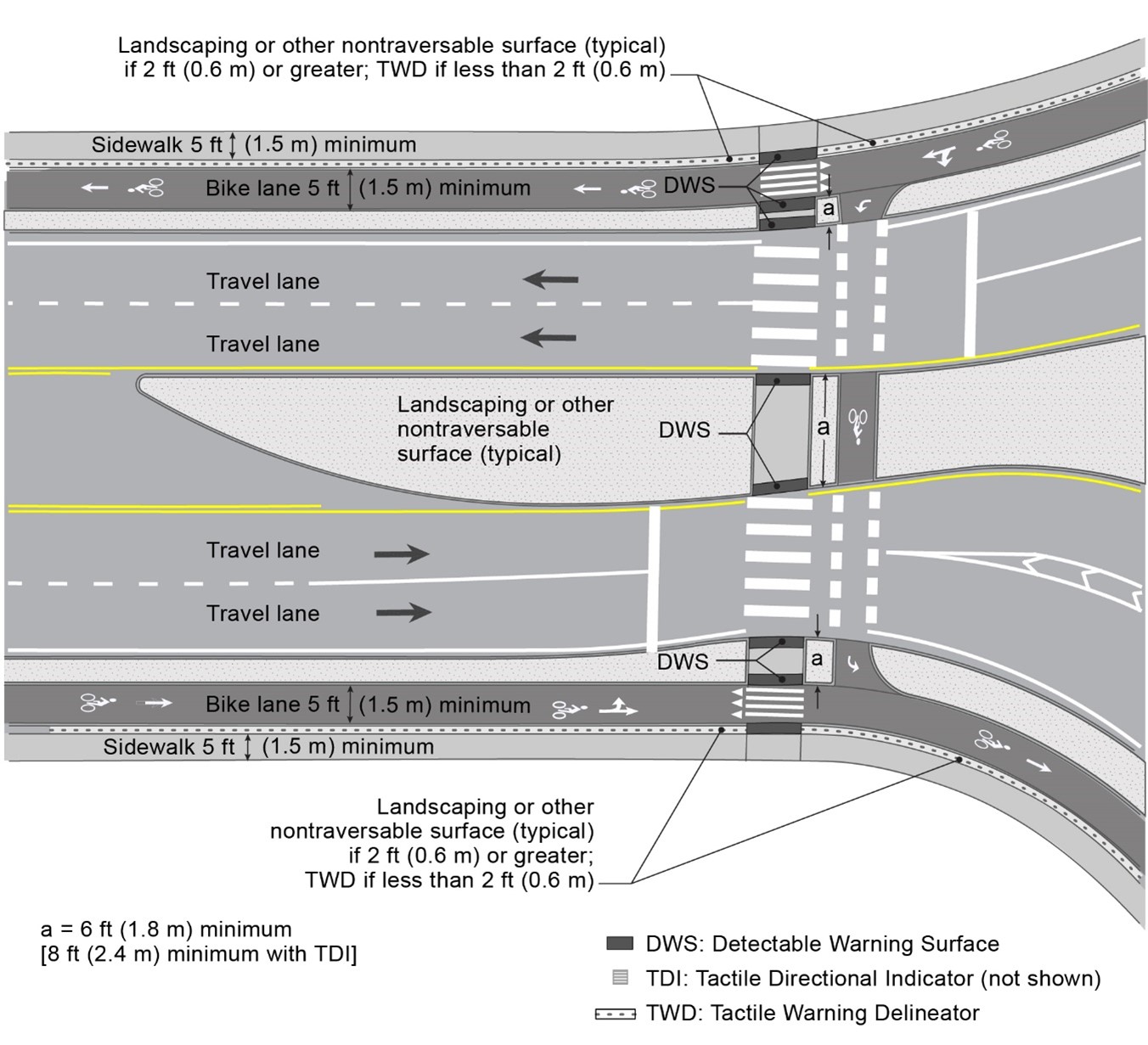
Exhibit 10-31 from the Guide: Separated Bicycle and Pedestrian Crossings with One-Way Separated Bicycle Lanes at a Multilane roundabout.
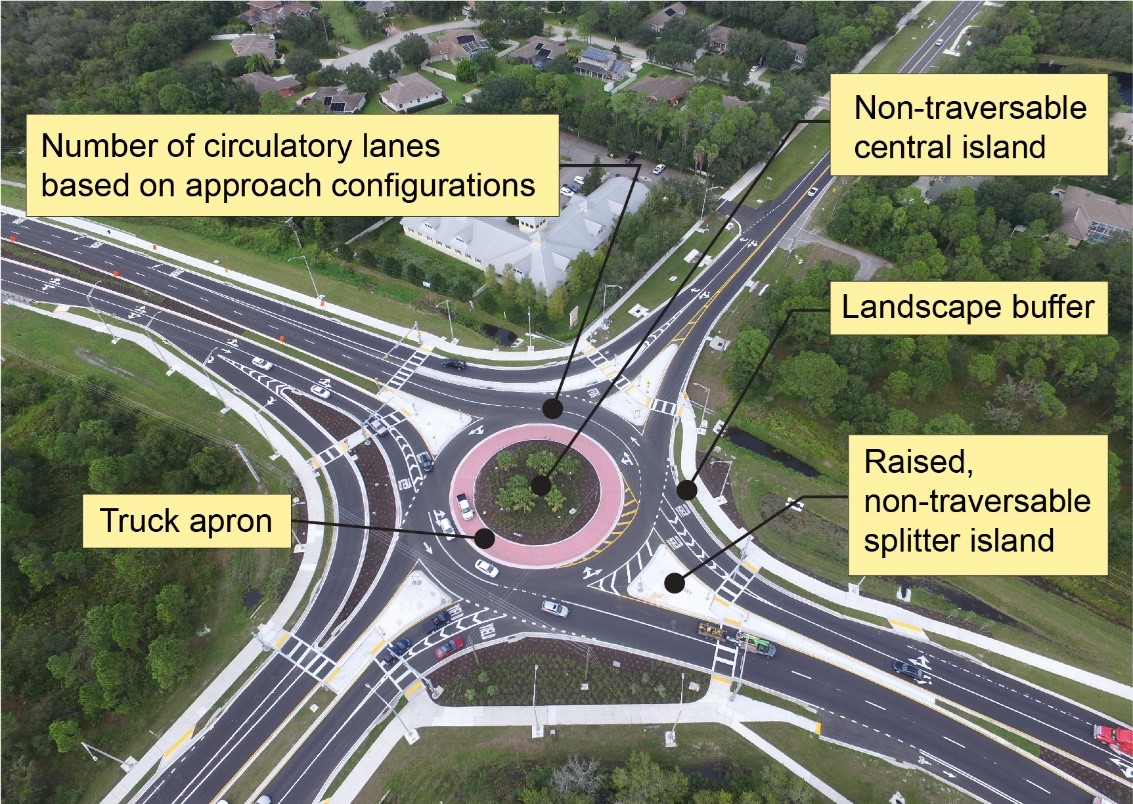
Exhibit 2-19 from the Guide: Multilane Roundabout Elements. Location: SR 64/Rye Road, Manatee County, Florida; Image source: Patel, Greene, & Associates, LLC.
Part V: Final Design and Implementation
- Reorganized the presentation of traffic control devices by area of the roundabout, rather than by type of device, and included many new photos of traffic control devices at roundabouts.
- Expanded discussion of the use of signals and beacons at roundabouts, including for metering applications and pedestrian crossings.
- Expanded discussion of roundabouts at or near at-grade rail crossings.
- Added refinements to Illuminating Engineering Society (IES) illumination method to increase design flexibility.
- Added new examples of construction staging sequences.
Appendix: Design Performance Check Techniques
The new Guide also includes an appendix with design performance check techniques, including geometric speed check techniques, sight distance and visibility, vehicle path alignment, design vehicle checks, bicycle and pedestrian design flags, and pedestrian crossing and wayfinding assessments.
Learn More
NCHRP Research Report 1043 is available for download here from TRB. To discuss any of these elements further, contact Julia Knudsen, who managed the guide’s development, or Lee Rodegerdts, who served as a key author and as Principal Investigator for the early stages of the project.
